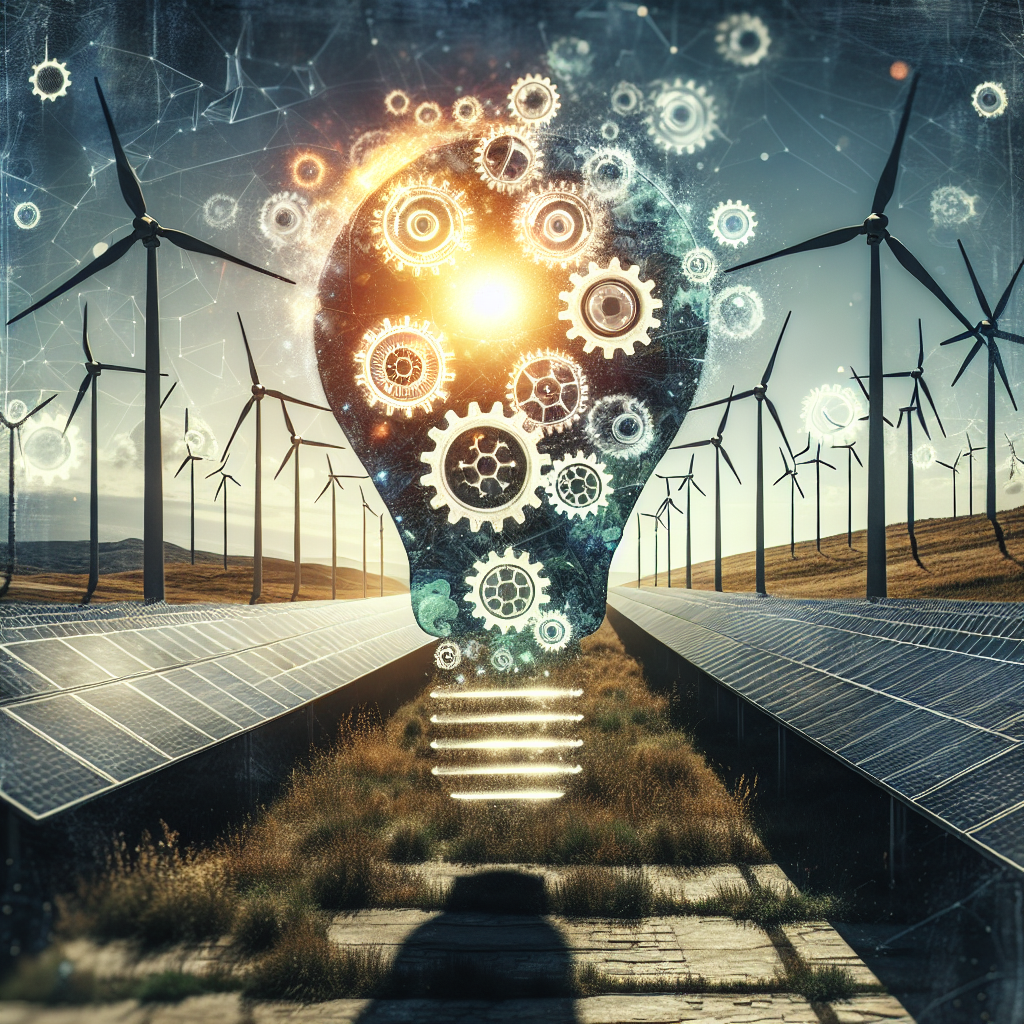Renewable energy sources such as solar and wind power are becoming increasingly popular as the world looks to reduce its reliance on fossil fuels. However, one of the challenges of using renewable energy is the intermittent nature of these sources. This means that it is crucial for renewable energy equipment to be operating at its optimal level at all times to ensure a consistent and reliable energy supply.
Equipment failures in renewable energy systems can be costly, both in terms of downtime and repairs. This is where artificial intelligence (AI) comes in. AI technology can be used to predict and prevent equipment failures in renewable energy systems, ultimately saving time and money for operators.
How Does AI Predict Equipment Failures?
AI uses machine learning algorithms to analyze data from sensors and other sources to predict when equipment is likely to fail. By analyzing patterns in the data, AI can identify early warning signs of potential failures, allowing operators to take preventative action before a breakdown occurs.
For example, in a wind turbine, AI can analyze data such as temperature, vibration, and power output to detect anomalies that could indicate a problem. By monitoring these key metrics in real-time, AI can alert operators to potential issues before they escalate into full-blown failures.
AI can also be used to create predictive maintenance schedules based on the analysis of historical data. By identifying patterns in equipment performance over time, AI can recommend when maintenance should be performed to prevent failures before they occur.
How Does AI Prevent Equipment Failures?
In addition to predicting failures, AI can also help prevent them from happening in the first place. By continuously monitoring equipment performance and identifying potential issues early on, AI can help operators take proactive steps to maintain equipment in optimal condition.
For example, AI can recommend adjustments to operating parameters to reduce stress on equipment and extend its lifespan. By analyzing data in real-time, AI can suggest changes to operating conditions that can prevent wear and tear on components and reduce the risk of failure.
AI can also help operators optimize maintenance schedules to ensure that equipment is inspected and serviced at the right time. By analyzing data on equipment performance and historical failure rates, AI can recommend when maintenance should be performed to prevent failures and minimize downtime.
What are the Benefits of Using AI to Predict and Prevent Equipment Failures in Renewable Energy?
There are several benefits to using AI to predict and prevent equipment failures in renewable energy systems. Some of the key advantages include:
– Reduced downtime: By predicting failures before they occur, AI can help operators take proactive steps to prevent equipment breakdowns. This can reduce downtime and ensure a consistent and reliable energy supply.
– Cost savings: Preventing equipment failures can save operators money on repairs and replacement parts. By extending the lifespan of equipment and reducing the frequency of breakdowns, AI can help operators reduce maintenance costs and improve the overall efficiency of their renewable energy systems.
– Improved performance: By optimizing maintenance schedules and operating parameters, AI can help operators maximize the performance of their equipment. This can lead to increased energy production and higher returns on investment for renewable energy projects.
– Enhanced safety: Preventing equipment failures can also improve safety for operators and maintenance personnel. By reducing the risk of accidents and injuries caused by equipment malfunctions, AI can help create a safer working environment for those involved in renewable energy operations.
FAQs
Q: How accurate is AI in predicting equipment failures in renewable energy systems?
A: AI can be highly accurate in predicting equipment failures, especially when trained on large amounts of data from sensors and historical records. By analyzing patterns in the data, AI can identify early warning signs of potential failures with a high degree of accuracy.
Q: How can operators integrate AI into their renewable energy systems?
A: Operators can integrate AI into their renewable energy systems by installing sensors and collecting data on equipment performance. This data can then be fed into AI algorithms for analysis and prediction of failures. Many AI platforms also offer user-friendly interfaces that make it easy for operators to monitor equipment performance and receive alerts on potential issues.
Q: What are the costs associated with implementing AI for predictive maintenance in renewable energy systems?
A: The costs of implementing AI for predictive maintenance can vary depending on the size and complexity of the renewable energy system. However, the long-term cost savings from preventing equipment failures and optimizing maintenance schedules typically outweigh the initial investment in AI technology.
Q: Can AI be used to predict and prevent equipment failures in all types of renewable energy systems?
A: Yes, AI can be applied to a wide range of renewable energy systems, including solar, wind, hydroelectric, and geothermal power plants. By analyzing data from sensors and other sources, AI can help operators predict and prevent equipment failures in virtually any type of renewable energy system.
In conclusion, AI technology offers a powerful tool for predicting and preventing equipment failures in renewable energy systems. By analyzing data in real-time and identifying potential issues early on, AI can help operators maintain their equipment in optimal condition and ensure a consistent and reliable energy supply. The benefits of using AI for predictive maintenance in renewable energy systems are clear, including reduced downtime, cost savings, improved performance, and enhanced safety. As the renewable energy industry continues to grow, AI will play an increasingly important role in ensuring the reliability and efficiency of renewable energy systems.

